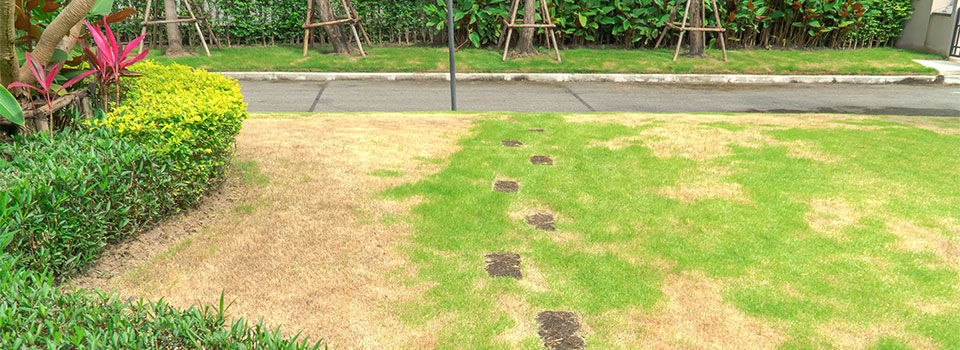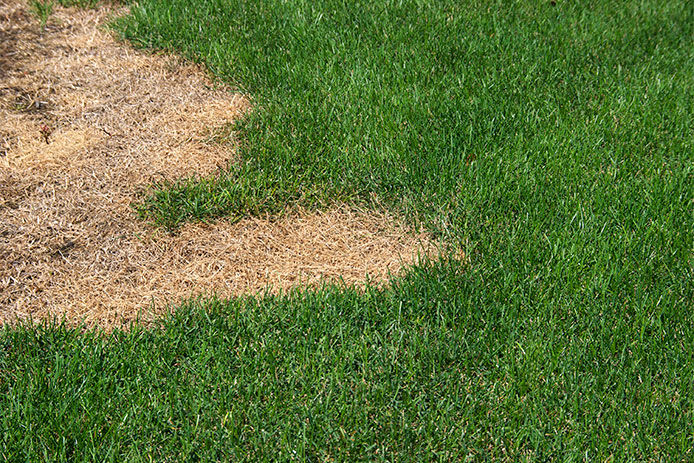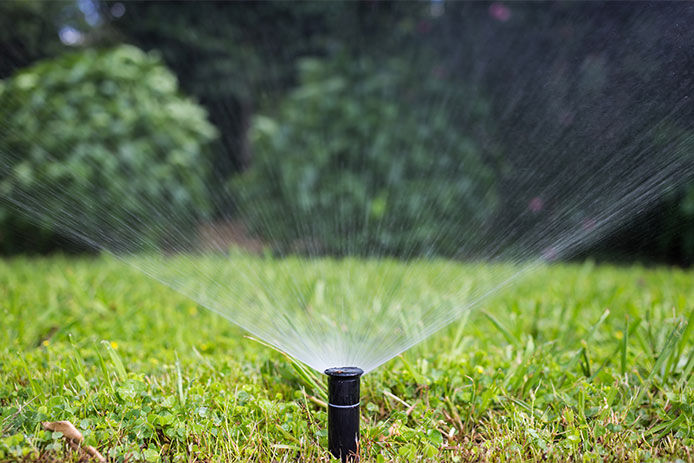Dormant Grass vs. Dead Grass: How to Troubleshoot Your Lawn

We all love a thick, lush, green lawn. There's nothing with quite as much curb appeal! But growing that beautiful lawn can be challenging, especially in climates facing extreme heat and drought. As you're staring at a brown lawn, trying to figure out dormant grass vs. dead grass, you might feel like it's a lost cause.
But stop! Before you tear out the sod, it's essential to check if that grass is really dead. It could be going through a dormant phase. The best time to set up a healthy lawn is in the fall, but you can address dead patches any time. Tackle any problems with your turf now, and soon you'll have a gorgeous green lawn that you'll be proud of!
Dead vs. Dormant Grass

“Is my grass dead or dormant? How can I tell?”
Just by looking at it, you often can't tell if your grass is truly dead vs. dormant. Grass begins to brown due to changes during the seasons. What is dormant grass? When grass goes dormant, it stops growing. It might turn brown along the top and appear dead. But if the base of the grass, known as the crown—the part of the plant where individual blades emerge—is still alive, then there's hope for the grass to recover. Dormancy is a protective state for grass.
Of course, the grass can look pretty dead when it's in a dormant state. When grass is truly dead, it won't come back. The blades have died down to the root, and there's no way for the grass to get nutrients and continue to grow next year.
Why does grass suddenly die? There can be several factors. Often during dry weather, grass will go dormant to protect the root and hold onto the nutrients. A few weeks of dry weather isn't usually deadly to a yard.
The grass may die because of contaminants in the soil. It can also die if it gets chemically burned. That's why it's important to refrain from fertilizing your grass during dry, hot weather. Pet urine can scald grass with high nitrogen concentrations and ultimately kill it. Grass may also die because of salt and ice melt during winter months, which build up in the soil.
It's important to understand why your grass is dead (or dormant), so you can properly address the cause.
Reasons for Dead Grass
- Smothering (such as leaving a kiddie pool or trashcan on the grass)
- Pet urine in high concentration (pets that go in the same spot over and over)
- Fertilizing in the wrong conditions
- Ice melt and other soil contaminants
- Fungus and grass diseases
- Pests and burrowing animals
- Weeds and invasive plants
- Very prolonged periods of drought
Reasons for Dormant Grass
- Consistently high temperatures
- Consistently low temperatures (during the winter months)
- Lack of water and periods of drought
- Compaction and overgrowth or thatch
So how do you know if your grass is truly dead or dormant? If it is dead, how do you fix the problem quickly to restore your lawn to a lush, green state?
How to Test and Revive Dormant Grass

So, is your grass officially dead, or is it just dormant? It can be tough to tell at first glance, especially if it looks brown and dry. Fortunately, you can perform some easy tests to answer the dead vs. dormant grass quandary.
1. Pull on the Grass
The simplest way to determine dead vs. dormant grass is to grab a fistful of the brown grass and give it a pull. If the grass comes up roots and all with no resistance, it's dead. When you pull on dormant grass, the blades come out of the ground, but the roots will remain intact.
2. Inspect the Lawn
Take a step back and assess the yard. Is the entire lawn brown, or is it just brown in certain spots and patches? If the yard is consistently brown, then the grass is likely dormant. If there are brown, dry patches in random places, then the grass may be dead in those spots. Also, look at sites where pets may frequent, areas near roads and alleyways, and locations where sprinklers might miss.
3. Water the Lawn
Watering your lawn will help to revive the dormant grass. If you've been away for a while and the grass looks uniformly brown, don't panic. Get out your hose and give the lawn a consistent drink for several days. If the grass is dead, no amount of water will bring it back to life. If your lawn is just dormant, it should look greener within a few weeks of consistent water.
4. Pull the Weeds
After watering your lawn, pull the weeds. Avoid spraying weeds if the lawn is dormant—you don't want to damage the grass further. You also don’t want to just mow over the weeds. They need to be removed by the root so they don’t grow back. Weeds will soak up the water desperately needed by your grass.
5. Aerate the Patch
If you’re trying to revive a dormant patch of lawn, you can use an aerator to create pockets of space where air and nutrients can reach the roots of the remaining grass.
When addressing dormant grass, you want to look at the cause and find the simplest solution to restore your lawn's health. This may mean redirecting Fido to a new potty spot or using deterrents for burrowing animals. Typically, regular water and cooler temperatures will revive your lawn from dormancy.
When and How to Reseed and Repair Your Dead Grass

So, you’ve performed the dead vs. dormant grass tests, and your grass shows no signs of life. It may be time to reseed and repair your lawn. Whether you need to reseed a small patch or the whole yard, here are the best steps to restore a dead lawn.
1. Remove the Dead Grass
Eliminate all the dead grass by raking the lawn. Remember from the dormant grass test—dead grass will come right up from the root.
2. Test and Prepare Your Soil
Most University extension offices offer soil testing. You will need to send in a small sample of your soil, and they will help you determine the right fertilizer requirements for your yard. This enables you to avoid over-fertilization. Grass will thrive when the soil pH is between 6.5 and 7.0. You may need to spread mulch or soil before planting seeds.
3. Measure the Spot
Grass seed is typically measured by square footage. So, it's essential to measure the area of your lawn that you need to reseed so you know exactly how much seed to purchase.
4. Choose Your Seed
Select the seed for your lawn. Seeding is typically more successful if you use seed-starter fertilizers. There are many options to help you get your grass off to the best, healthiest start possible.
5. Water the Seeds
New grass requires a lot of water to get started. Follow the guidelines on your grass seed for optimal results. You may need to use a sprinkler to spot-water the reseeded areas several times per day (usually in the morning and evening when the weather is cooler).
6. Be Patient
Regrowing a dead lawn from seed takes time. However, with the right weather conditions and consistent watering, you'll see tiny grass blades sprouting up soon. Remember that it may take a few weeks to see results, so you'll need to be patient and persistent.
Whether your lawn can be revived from dormancy or requires reseeding, you’ll find everything you need at Do It Best. We have all the tools you’ll need to get that lush, beautiful lawn that’s the envy of the neighborhood!